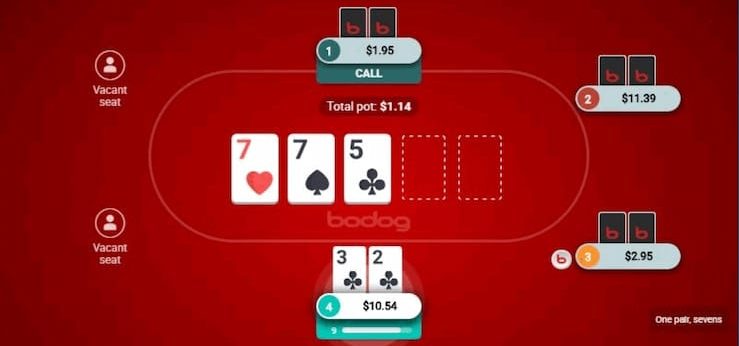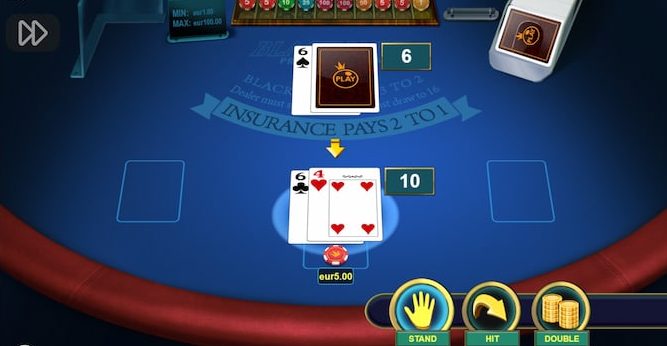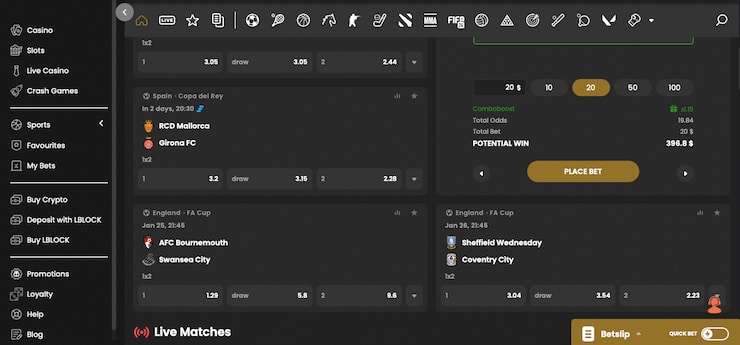The Ultimate Bankroll Management Guide for 2024
For any gambler who wants to be profitable over time, bankroll management is an important skill to master. It is the practice of efficiently managing your betting budget to avoid losing large sums of money while gambling online.
In this guide, we’ll cover all the essentials of bankroll management in sports betting, at casinos, and in poker rooms. We also reveal the best gambling strategies, what games give you the best chance of winning, and much more.
What is Bankroll Management and Why is it Important?
A bankroll refers to how much money you have. Bankroll management refers to the system you employ to manage your available betting funds. The foundation of good bankroll management starts with determining how much money you can afford to lose on gambling.
While the ideal outcome of online betting is to win, it’s important to understand that there’s a chance that you could lose the money you set aside to gamble online. This is why it is essential to work out how much you can afford to lose within a given period before you start placing bets.
When it comes to answering the question “How much of your bankroll should you bet?”, you’ll be pleased to learn that there are many different strategies available, a few of which we’ll cover in more detail later on in this article.
Effective bankroll management is an essential part of being a successful gambler. It lowers the risk of substantial losses and the chance of betting impulsively. It also gives you sustainability over a long period, even if you find yourself facing a losing streak.
Bankroll Management in Poker
 Bankroll management in poker is slightly different from sports betting and casino bankroll management as this game requires a certain level of skill. Sure, luck is involved in the short term but, in the long run, poker is predominantly a skill-based game.
Bankroll management in poker is slightly different from sports betting and casino bankroll management as this game requires a certain level of skill. Sure, luck is involved in the short term but, in the long run, poker is predominantly a skill-based game.This means that no matter how good your gambling money management is, if you are not skilled enough at the game then chances are that you will find yourself losing most, if not all, of the money you set aside.
For this reason, it’s imperative that if you are a recreational player with little experience, you use conservative bankroll management in poker. This will give you the time to hone your skills and have a winning percentage.
What Limits Can You Afford?
Working out what limits to play depends on your skill level, how aggressive you like to play, and whether you are participating in cash games, sit-and-go’s, or large tournaments. Next, we’ll take a look at how many buy-ins you should assign based on your bankroll, skill level, and game type.
Cash Games
These are the limits your bankroll should cover for limit and no-limit cash games
Cash Game Beginner Expert Buy-in Expert Expert buy-in Limit 200-400 big blinds 100-200 big blinds No Limit 50-100 buy-ins 30-50 buy-ins Tournaments
The table below shows how many buy-ins your bankroll should cover for large multi-table tournaments and sit-and-go’s.
Cash Game Beginner Expert Limits Expert Expert Limits Multi-table 100-200 buy-ins 50-100 buy-ins Sit and Gos 100 buy-ins 50 buy-ins When Should I Increase My Buy-ins?
You should think about increasing your buy-ins when your bankroll and skill increases. If you started with $200 and now have $400 after winning then your bankroll is big enough to support the step up. Once you start considering yourself an expert, or at least not a beginner anymore, you can adjust your buy-ins accordingly.
Casino Bankroll Management

Proper casino bankroll management is essential as you can burn through your cash very quickly in a casino. Unlike sports betting and poker, most casino games are based on pure luck and involve little to no skill.
Because of this, one of the best casino bankroll management systems you can apply is a flat-rate betting strategy. This involves working out how much you will bet for every hand, roll of the dice, or spin of the wheel. Setting your stake at about 1-2% of your starting bankroll is a good idea.
It’s also recommended to play games with a low house edge. This is because the lower the house edge is the higher the RTP(return to player).
RTP is denoted as a percentage in casino games and relates to the average percentage a game will pay out depending on the amount deposited. For example, an RTP of 95% means that for every $100 gambled, $95 is paid out in winnings on average.
A house edge of 4% gives a 96% RTP, which is average, whereas anything above 97% is considered a low-edge game. Here we take a look at the top five low house edge games we’ve come across during our years of experience.
- Blackjack – RTP 99.80% (1 deck) | 99.44% (4 deck) | 99.37% (8 deck)
- Draw poker (Deuces Wild) – RTP 99.73%
- Mega Joker Slot (NetEnt) -RTP 99%
- Baccarat – RTP 98.94 – 98.75% depending on variant
- Craps – RTP 98.59%
Bankroll Management in Sports Betting

Bankroll management in sports betting is a little more complicated due to the human element involved and its unpredictability. While this unpredictability makes things more difficult, the upside is you can use your experience, skill, and knowledge to find good value bets.
Time and research are essential to being a successful sports bettor. Before placing any bet you need to research form, injuries, and multiple other factors.
When first starting, you should be more conservative. However, as your experience and abilities grow, you can be more aggressive and dynamic in your sports betting bankroll management strategies.
Betting Units
Measuring your bets in units instead of monetary value is helpful in sports betting bankroll management. To determine what betting unit you should use, you need to evaluate your bankroll and, as we’ve mentioned, it’s best to set the unit at about 1-2% of your bankroll, maybe slightly higher if you are a confident and experienced bettor.
If you start with a $500 bankroll, you might set your unit at 2%, which is $10. This means that you have 50 betting units. Units make tracking your success easier and it also helps to gauge your skill compared to others.
For example, your friend may win $300 in a month while you only win $100. However, they started with a huge bankroll and are betting in units of $100 so they have won 3 units. Even though you’ve won $100 you have been more successful as you are 10 units up.
Units also allow you to employ more aggressive bankroll management strategies. You can increase units based on your confidence in a wager, which we will cover in more detail in our betting strategies section later.
Why Progressive Betting Strategies Should be Avoided
Progressive betting strategies have been around for centuries and many gamblers try to employ them. However, they are incredibly risky. There are many types of progressive strategies. One of the most famous is the Martingale System. This system can be employed in casino games that have a 1 in 2 chance of winning such as betting on odds or even in roulette.
When using this strategy, you’ll start by setting your base stake. If the bet wins, you stake the same amount on your next bet. If you lose you double your stake. If you lose again you double your previous stake and so on. The reasoning is that when you eventually win, by doubling your stake you recuperate all the money you have lost.
If you have an unlimited budget and a casino has no maximum betting limit then this system would work. Unfortunately, online casinos in Canada do have maximum betting limits and most people don’t have an endless supply of money to spend on gambling. This system is incredibly inefficient in the real world and can quickly wipe out your entire casino bankroll.
For example, let’s say that you have a bankroll of $250 and you’ve decided to bet on odds at a roulette table with a starting stake of $5. Let’s see just how fast your casino bankroll can disappear if you face a losing streak.
- Bet #1 – $5 ($245 remaining)
- Bet #2 – $10 ( $230 remaining)
- Bet #3 – $20 ($210 remaining)
- Bet #4 – $40 ($170 remaining)
- Bet #5 – $80 ( $90 remaining)
By your 6th bet, you already don’t have enough money to carry on the system, even a win on the 6th bet leaves you 28% down from your original bankroll.
When you win a hand on your base bet, you will only be making $5 profit each hand. However, when you’re in the red, you are risking huge amounts. The risk-reward ratio isn’t great which is why we believe it’s best to stay away from these types of strategies.
The Best Strategies for Bankroll Management
There are a variety of betting strategies you can use for efficient bankroll management. Some are very straightforward and geared towards safety and longevity, while others are riskier and aim for higher profits but still give you that safety net.
Flat Betting
Flat betting is the most straightforward type of strategy. When using this system, you set a flat bet amount/betting unit. The odds, game, or type of bet play no role in determining your stake amount.
Your betting unit is usually set anywhere from 1%-5% of your original bankroll. If your original bankroll was $200, you might set your bet unit at $4 (2% of $200). No matter if you win or lose your first bet, your stake for your second and subsequent bets will remain at $4.
Flat betting is often the slow but steady method. There is great potential to make a profit but unless you win a game with huge odds, it is going to take time. However, it minimizes losses and even if you go on a bad losing streak with this method, you are unlikely to go broke. This makes it an ideal strategy for beginners.
Percentage Betting
Percentage betting is similar to flat betting in that it’s straightforward and is a fairly conservative strategy. You stake a fixed percentage of your bankroll, anywhere between 1%-3% is a standard amount, no matter the bet type, game, or event you are betting on.
Unlike flat betting, your stake will always change as your percentage is based on your current bankroll. For example, we start with a $1,000 bankroll and set our fixed percentage at 2%. We place our first $20 on a +200 bet which comes in so we profit $40, giving us a bankroll of $1,040. For our second bet, our stake is 2% of $1,040 which is $20.80.
Alternatively, if our first bet lost we would be left with $980 so our stake for our second bet would be $19.60 (2% of 980). This strategy is great as it lets you ride the highs of a winning streak and get bigger payouts the more you win. It also allows you to be more conservative if you are in a slump, and your bankroll will not diminish quickly. However, the downside is that it’s harder to make back your losses than the flat betting system as your betting units are smaller.
Confidence Model
Things get a tad more complex with the confidence model betting strategy. With this approach, your stake is adjusted based on your confidence in the wager and is a strategy used a lot in sports betting money management.
When using this model, it’s good practice to use a points system, this could be 1-3 to begin with, but you could go 1-5 or more after some experience.
You should set a base betting unit, which would be used for bets you score 1 point, i.e. the bet you are least confident about. If you are fairly confident in a bet and score it a 2 you would double your base betting unit, and for a bet you are very confident in you would assign 3 points and bet three units.
For example, let’s say you have a $1,000 bankroll. You set your base unit as $20 which is a reasonable amount (2% of total bankroll). You are planning to bet on the Kansas City Chiefs to beat the Buffalo Bills in the NFL, but you think it’s a tight game so you score the game 1 point as you are not too confident. In this scenario, you would bet $20.
Next week, the Chiefs are playing the Washington Commanders. You are confident the Chiefs will win so score your prediction 3 points. In this scenario, you would bet $60 (3x your base betting unit).
This is a much more aggressive betting strategy than many others so it is riskier. However, if successful, you stand to make more profit. It requires more skill in determining value and predicting results. You also need to pay close attention to your bets and the amount you’re betting as your bankroll can deplete much faster than percentage and flat betting.
Kelly Criterion Model
The Kelly Criterion is a turbo-charged confidence model and is one of the most complicated and risky strategies but potentially one of the most profitable, depending on how good your handicapping skills are. This method works using the following mathematical formula: f=(bp-q)/b
- f – Represents the bet size as a percentage of your bankroll
- b – Represents the decimal odds -1 (if you have other odd formats you will need to convert to decimal)
- p – Represents the chance of the bet winning
- q – Represents the probability of the bet losing
If you’ve not done maths since high school, this formula can look a little daunting, but it’s fairly easy to get the hang of. There are also many free-to-use Kelly Criterion calculators on the Internet where you input the odds and what percentage chance you think the result has of winning and it does the rest for you.
This method can be very successful for those who have a lot of knowledge of sports and have a record of correctly handicapping sports. On the flip side, you can lose huge chunks of your bankroll if your handicapping is incorrect.
This is why it’s a system you should not implement if you are a beginner. It’s best to start on one of the more conservative strategies, build your skills, and then potentially move on to this strategy.
Always Practice Responsible Gambling
Gambling can be a lot of fun and potentially make you money. However, if not done responsibly, it can have serious negative repercussions on your mental health, finances, and relationships.
Proper gambling money management is a major part of gambling responsibly. Here are our three top tips on how to be safe and responsible when gambling.
Tip #1: Set a Budget and Stick to It
When you start gambling, you should set a budget. Your budget should be the amount of money you can afford to lose, as there’s a chance you will over a given period (weekly or monthly works best).
Setting the budget is the easy part, keeping to it is trickier. You need to have the willpower to not deposit extra funds if you’ve lost. If you don’t think you can control yourself, many websites have settings where you can set a maximum deposit amount.
Tip #2: Don’t Try to Recoup Losses
This is one of the biggest mistakes gamblers make and one of the main reasons players go broke. You have a bad run and you are in the negative. You think “I have to win soon, so if I up my bet and get a couple of wins, then I’ll be back to where I was, maybe even with a profit.”
The problem with this is that you are not guaranteed the win and a few losses after you’ve upped your stakes can see your entire bankroll gone in moments. Your goal should be to enjoy the experience knowing that you might make a profit over time but also understanding that you could lose it all. Having a bankroll management strategy and keeping to that is your best chance of achieving that goal.
Tip #3: Don’t Gamble Under the Influence
Alcohol does not mix well with gambling and should be avoided. If you have one drink while gambling, that’s probably fine. But if you are having 3, 4, 5, or more, you should not be betting.
Alcohol negatively affects decision-making. Studies have shown people often increase their bets to recoup losses when they consume alcohol. The same goes if you are under the influence of a narcotic or even certain medications. You should always have a clear head when gambling.
Mistakes to Avoid When It Comes to Managing Your Bankroll
Certain bet types and casino games should be avoided when trying to be an effective bankroll manager as they lower your chance of being profitable. We take a look at two things that are best left untouched when gambling.
Avoid Parlays
Parlays are combining multiple bets into one single wager. They are a popular bet type as the odds can be very high. However, while the odds are high, they are not good value. This is because an online betting site always has a house edge built into a bet. This edge depends on the bet type and sport but it’s generally between 1-6%.
When you combine your bets into a parlay, this house edge increases and the expected value (EV) goes down with each additional wager added to your parlay.
Play Games with High RTPs
The term “Return to Player” (RTP) in betting refers to the percentage of money that is returned to players depending on the amount of money deposited into the game. The RTP of casino games is denoted by a percentage. If a game has an RTP of 96.5%, for every $100 spent on the game, an average of $96.5 will be paid out in winnings.
It doesn’t guarantee that if you bet $100 you will get at least $96.5 back. What it does mean is that the higher the RTP, the more probability you have of winning money. The average RTP of slot games is 96%, any game with 97% or higher is seen to have good RTP. Other automated casino games vary in their RTP. Video poker and blackjack are particularly good, with many games having a 99%+ RTP.
Our Final Thoughts About Bankroll Management
Bankroll management is an invaluable tool in any gambler’s arsenal. It grants you longevity and allows you to stay afloat even when you lose, which gives you the chance to make back the money you may have lost. Before betting a single dollar, determine how much money you can afford to gamble. Then plan your bankroll strategy. This will give you the best chance of being profitable and not going broke in the long run.
FAQs
What is the best way to manage your bankroll? .
The best way to manage your bankroll depends on what form of gambling you participate in. However, the fundamentals of managing your bankroll for any form of gambling start with setting your budget. This budget should be no more than the amount of money you can afford to lose without causing you financial harm
How much of your bankroll should you bet a day?
1-5% of your bankroll is the optimal percentage of your bankroll to place on each bet. How many bets you should place a day depends on how often you bet and how long your initial bankroll was set to be used. If you bet every day and you should be more conservative if you are only placing bets once or twice a week then you can increase the amount of bets you place.
What is bankroll management?
Bankroll management is the practice of effectively managing your money at online gambling sites. It involves setting an appropriate budget and determining what proportion of this budget you should wager on any game or event you bet on.
How do you build a poker bankroll?
The best way to build a poker bankroll is by properly managing your bankroll. Poker in the short term involves a lot of luck. However, over a significant number of hands and games it is a skill game. To build your bankroll you need to practice and improve your skill level and managing your bankroll allows you to do this
What is a bankroll?
The term bankroll refers to the amount of money you have set aside to gamble.
Joe Yarnold has been a part of the SBS team since 2021. He works as a content editor and writer specializing in gambling. He has a background in writing informative articles on all aspects of gambling. Although his focus is on casinos he also has a passion for sports betting and has years of experience in this field.
About Us:
SafeBettingSites is a new UK initiative launched in 2020 to protect customers against fraudulent sites.
Our goal is to protect customers against unlicensed operations with user reviews and an online complaints system.
